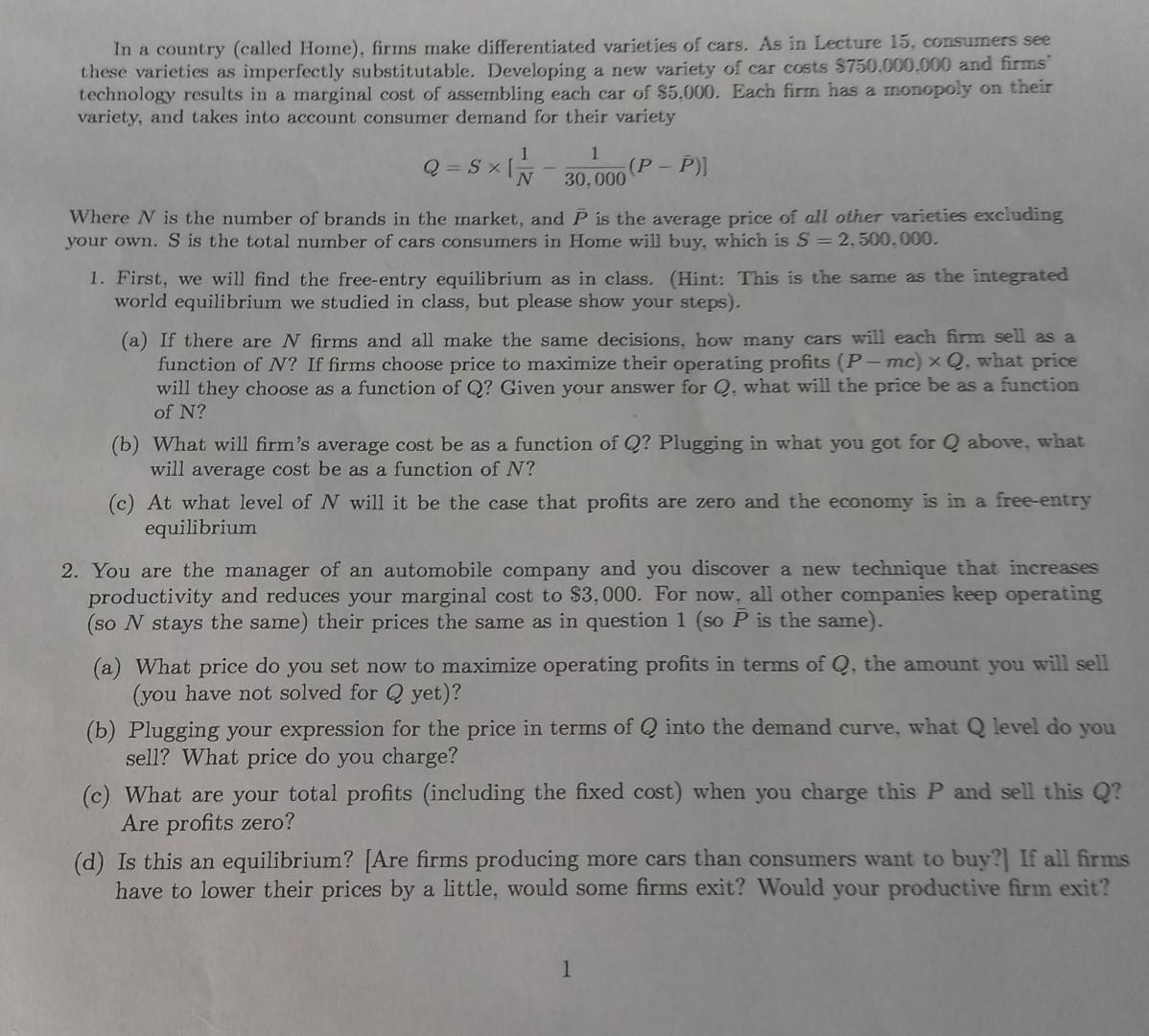Answered step by step
Verified Expert Solution
Question
1 Approved Answer
In a country (called Home), firms make differentiated varieties of cars. As in Lecture 15, consumers see these varieties as imperfectly substitutable. Developing a

In a country (called Home), firms make differentiated varieties of cars. As in Lecture 15, consumers see these varieties as imperfectly substitutable. Developing a new variety of car costs $750.000.000 and firms technology results in a marginal cost of assembling each car of $5,000. Each firm has a monopoly on their variety, and takes into account consumer demand for their variety (P - P)] Where N is the number of brands in the market, and P is the average price of all other varieties excluding your own. S is the total number of cars consumers in Home will buy, which is S = 2,500,000. Q=Sx[ 1 1 N 30.000 1. First, we will find the free-entry equilibrium as in class. (Hint: This is the same as the integrated world equilibrium we studied in class, but please show your steps). (a) If there are N firms and all make the same decisions, how many cars will each firm sell as a function of N? If firms choose price to maximize their operating profits (P-mc) x Q, what price will they choose as a function of Q? Given your answer for Q, what will the price be as a function of N? (b) What will firm's average cost be as a function of Q? Plugging in what you got for Q above, what will average cost be as a function of N? (c) At what level of N will it be the case that profits are zero and the economy is in a free-entry equilibrium 2. You are the manager of an automobile company and you discover a new technique that increases productivity and reduces your marginal cost to $3,000. For now, all other companies keep operating (so N stays the same) their prices the same as in question 1 (so P is the same). (a) What price do you set now to maximize operating profits in terms of Q, the amount you will sell (you have not solved for Q yet)? (b) Plugging your expression for the price in terms of Q into the demand curve, what Q level do you sell? What price do you charge? (c) What are your total profits (including the fixed cost) when you charge this P and sell this Q? Are profits zero? (d) Is this an equilibrium? [Are firms producing more cars than consumers want to buy?] If all firms have to lower their prices by a little, would some firms exit? Would your productive firm exit? 1
Step by Step Solution
★★★★★
3.39 Rating (158 Votes )
There are 3 Steps involved in it
Step: 1
a If there are N firms and all make the same decisions how many cars will each firm sell as a function of N If firms choose price to maximize their operating profits Pmc xQ what price will they choose ...
Get Instant Access to Expert-Tailored Solutions
See step-by-step solutions with expert insights and AI powered tools for academic success
Step: 2

Step: 3

Ace Your Homework with AI
Get the answers you need in no time with our AI-driven, step-by-step assistance
Get Started


